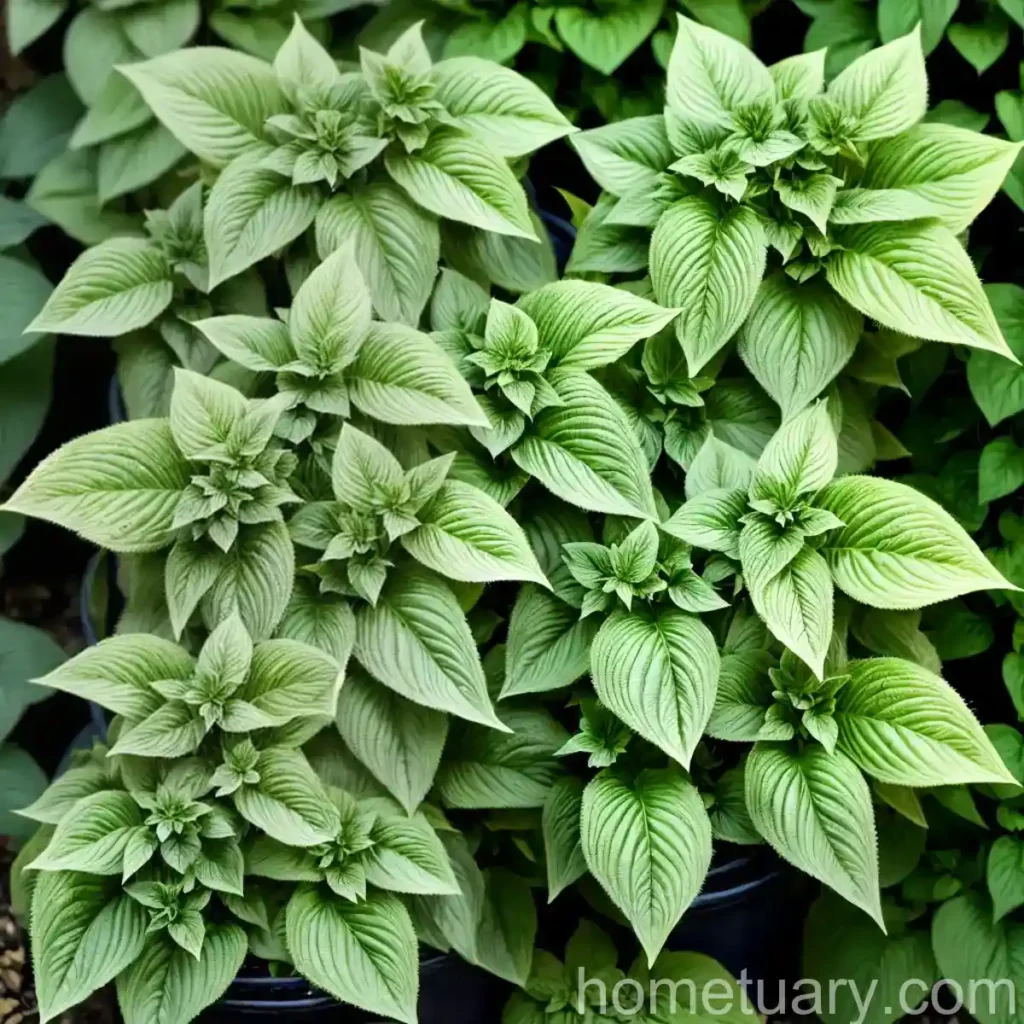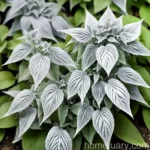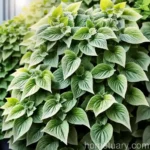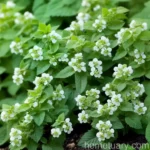Cuban Oregano (Plectranthus australis ‘Variegatus’): A Complete Guide for Plant Enthusiasts
Welcome to the world of Cuban oregano, a distinctive and versatile plant with a wide array of uses and benefits. In this comprehensive guide, we will delve into the various facets of Cuban oregano (Plectranthus australis ‘Variegatus’), exploring its cultural significance, optimal growing conditions, propagation techniques, common pests and diseases, and much more. Whether you’re an amateur gardener wanting to elevate your indoor plant collection or an experienced horticulturist seeking valuable insights, this guide is designed to cater to all levels of interest in Cuban oregano.
/cuban-oregano-plectranthus-amboinicus--55744656-593e54463df78c537b2353f1.jpg)
What is Cuban Oregano?
Cuban oregano, scientifically known as Plectranthus australis ‘Variegatus’, is a member of the Lamiaceae family, which encompasses aromatic herbs like mint, basil, and sage. Originating from East Africa and Southern Asia, this herbaceous plant is cherished for its succulent, variegated leaves and rich fragrance. Despite its name, Cuban oregano does not belong to the genus Origanum, which is the authentic source of culinary oregano; instead, it is a member of the Plectranthus genus, which includes numerous ornamental and medicinal species.
Key Takeaways – Cuban Oregano (Plectranthus australis ‘Variegatus’)
Before we delve into the details of cultivating Cuban Oregano, here are some key takeaways to set the stage:
- Scientific Name: Plectranthus australis ‘Variegatus’
- Family: Lamiaceae
- Origin: East Africa and Southern Asia
- Notable Features: Variegated, succulent leaves with a robust aroma
- Uses: Culinary, Medicinal, Ornamental
Now, let’s explore the essential aspects of caring for Cuban oregano, including its cultural requirements, ideal growing conditions, propagation methods, and potential challenges.
Culture
Cultural practices play a pivotal role in ensuring the healthy growth of Cuban oregano. By understanding the plant’s cultural requirements, enthusiasts can create an environment conducive to its flourishing. Here are the key cultural considerations for Cuban oregano care:
Water
-
Optimal Watering: Cuban oregano thrives in well-draining soil and requires moderate watering. It’s crucial to avoid waterlogging, as excess moisture can lead to root rot. This plant generally prefers slightly drier conditions compared to other herbaceous species, making it suitable for individuals who might occasionally forget to water their plants.
-
Frequency: Water the plant when the top layer of the soil feels dry to the touch. It is essential to strike a balance, ensuring that the soil is neither overly soggy nor completely arid. Consistent, moderate moisture levels are ideal for Cuban oregano.
-
Container Considerations: When cultivating Cuban oregano in containers, ensure that the pots have drainage holes to facilitate adequate water drainage. Excessive moisture retention in containers can be detrimental to the plant’s health.
-
Seasonal Adjustments: During the plant’s active growing phase, typically in the spring and summer, it may require slightly more frequent watering. In contrast, reducing the watering frequency during the plant’s dormant phase in fall and winter can prevent water-related issues.
Sunlight
-
Light Requirements: Cuban oregano thrives in bright, indirect sunlight, making it an excellent indoor plant. Position it near a window where it can receive ample natural light without being subjected to direct, intense sunlight.
-
Artificial Lighting: In environments with limited natural light, supplementary grow lights can be beneficial for ensuring the plant’s photosynthetic needs are met. Select a full-spectrum LED grow light and position it at an appropriate distance from the plant to mimic natural sunlight.
-
Adaptability: This versatile plant can tolerate brief periods of direct sunlight, especially during the morning hours. However, prolonged exposure to intense sunlight may lead to leaf scorching, necessitating relocation to a more shaded area.
Fertilizer
-
Balanced Feed: Cuban oregano benefits from regular, balanced fertilization during the growing season. A general-purpose liquid fertilizer with balanced NPK (nitrogen, phosphorus, and potassium) ratios can support robust growth and vibrant foliage.
-
Application Frequency: Apply fertilizer every 2-4 weeks during the plant’s active growth phase, typically from spring through early fall. Reduce or discontinue fertilization during the plant’s dormant period in winter.
-
Dilution and Application: Dilute the selected fertilizer according to the manufacturer’s instructions and apply it to moist soil to prevent root burn. A half-strength application is recommended to avoid overwhelming the plant with excessive nutrients.
-
Organic Alternatives: For enthusiasts preferring organic options, compost tea or diluted fish emulsion can serve as effective natural fertilizers, promoting the overall health of Cuban oregano.
Soil
-
Well-Draining Medium: Cuban oregano thrives in well-draining, porous soil that prevents water accumulation. A mixture of potting soil, coarse sand, and perlite or vermiculite can create an ideal growing medium for this plant.
-
Acidic to Neutral pH: The soil pH should range from slightly acidic to neutral, ideally between 6.0 and 7.0. Regular testing with a pH meter or test kit can help ensure that the soil’s acidity remains within the optimal range.
-
Aeration: Adequate soil aeration is essential for healthy root development and overall plant vigor. Ample aeration promotes proper nutrient uptake and prevents issues related to waterlogging and suffocation of the roots.
-
Repotting: When the plant outgrows its current container or exhibits signs of being root-bound, repotting into a slightly larger container with fresh, well-draining soil can revitalize its growth and vitality.
Pruning
Pruning serves as a valuable tool for shaping and maintaining the health of Cuban oregano, enhancing its aesthetic appeal and preventing issues such as overgrowth and susceptibility to diseases. Here are the key pointers to consider when pruning Cuban oregano:
-
Pinching Techniques: Regularly pinching back the growing tips of Cuban oregano can promote bushier, more compact growth and prevent legginess. Employ clean, sharp pruners or scissors to make precise cuts without causing undue damage to the plant.
-
Timing: Pruning can be conducted throughout the year as needed, although the onset of spring is an opportune time to engage in more extensive pruning to encourage vigorous new growth.
-
Deadheading: Removing spent flowers and yellowed or withered foliage can encourage the development of new blooms and maintain the plant’s overall aesthetic appeal.
-
Sanitization: Sterilize pruning tools with rubbing alcohol or a diluted bleach solution before and after use to prevent the spread of pathogens and minimize the risk of introducing infections through open wounds.
Propagation
Cuban oregano can be propagated through various methods, enabling enthusiasts to expand their plant collection or share this captivating herb with fellow gardening enthusiasts. The following techniques are well-suited for successfully propagating Cuban oregano:
Stem Cuttings
-
Preparation: Select a healthy, mature stem and make a clean, diagonal cut just below a node using sterile pruning shears. The cutting should ideally measure 4-6 inches in length and possess several sets of leaves.
-
Rooting Medium: Plant the cut end of the stem cutting into a well-draining propagation medium such as a mixture of perlite and peat moss or a specialized rooting hormone to expedite the rooting process. Maintain consistent moisture levels to support the development of new roots.
-
Environmental Conditions: Position the stem cuttings in a warm, humid environment with ample indirect sunlight. Enclose the cuttings and their container in a clear plastic bag or place them in a miniature greenhouse to maintain high humidity levels.
-
Root Development: Rooting typically occurs within 2-3 weeks, at which point the cuttings can be acclimated to normal growing conditions. New growth and increased vigor are indicative of successful root establishment.
Division
-
Season: Spring is an ideal time for dividing Cuban oregano plants, coinciding with the onset of their active growing phase. This method can be employed when the plant has matured and developed multiple distinct clumps or offshoots.
-
Procedure: Gently remove the plant from its container or the ground and carefully separate the individual clumps, ensuring that each division possesses an adequate root system and healthy foliage.
-
Potting and Care: Plant the divisions in separate containers with fresh, well-draining soil. Provide diligent care to the divisions, maintaining appropriate watering, lighting, and fertilization to facilitate their successful establishment.
Layering
-
Stem Layering: Select a low-growing, flexible stem and gently wound a small section near the middle. Dust the wounded area with a rooting hormone to stimulate root development.
-
Soil Contact: Bend the wounded section downward and secure it in contact with the soil using a U-shaped staple or a small rock. Cover the wounded area with a thin layer of soil, ensuring that the exposed foliage remains above the surface.
-
Rooting Period: After a period of several weeks, roots should begin to develop from the wounded site, signaling successful layering. Once established, the rooted section can be severed from the parent plant and potted as an independent specimen.
Container Popularity
Cuban oregano’s ornamental value, compact growth habit, and ease of cultivation make it a popular choice for container gardening enthusiasts. Here are several reasons why this plant has garnered acclaim in container gardening circles:
-
Space-Saving: The compact size and attractive foliage of Cuban oregano make it an excellent candidate for small to medium-sized containers, allowing gardening enthusiasts with limited space to cultivate this herb indoors or on balconies and patios.
-
Aesthetic Appeal: The variegated leaves of Plectranthus australis ‘Variegatus’ add visual interest to container compositions, serving as a versatile accent or focal point in mixed plant arrangements.
-
Ease of Maintenance: This robust herb is relatively low-maintenance, making it an appealing choice for individuals seeking hassle-free container plants that exhibit resilience and adaptability.
-
Indoor Versatility: Cuban oregano thrives indoors as a potted specimen, adapting to varying environmental conditions while providing an ample supply of aromatic foliage for culinary and medicinal purposes.
Container Common Diseases
While maintaining robust plant health is a priority in container gardening, Cuban oregano is generally resilient against many common diseases. However, several conditions can potentially impact the plant’s well-being when cultivated in containers. These include:
Root Rot
-
Causes: Excessive moisture and poor drainage can lead to the development of root rot in container-grown Cuban oregano. Waterlogging of the soil and prolonged exposure to damp conditions create an environment conducive to the proliferation of root-damaging pathogens.
-
Symptoms: Yellowing, wilting, and eventual collapse of the plant are indicative of root rot. Additionally, a foul odor emanating from the soil and dark, mushy roots are telltale signs of this pervasive issue.
-
Preventive Measures: Ensure that the container offers proper drainage, employing a well-draining soil medium and refraining from overzealous watering. Regularly inspect the plant’s roots and soil to detect signs of excessive moisture and take corrective action promptly if excess dampness is detected.
Powdery Mildew
-
Conditions: Humid, poorly ventilated environments can contribute to the development of powdery mildew on Cuban oregano’s foliage. The presence of excess moisture on the leaves and subdued air circulation exacerbates the risk of this fungal ailment.
-
Identification: A white, powdery growth on the upper surface of the leaves, coupled with yellowing or browning of affected foliage, signifies the onset of powdery mildew. Leaves may become distorted and exhibit stunted growth in severe cases.
-
Control Measures: Enhance air circulation around the plant, maintain moderate humidity levels, and avoid splashing water directly onto the leaves. Fungicidal treatments or natural remedies such as neem oil can mitigate powdery mildew infestations.
Disease Diagnosis
Accurate diagnosis is pivotal in treating and preventing diseases that may affect Cuban oregano. Here’s a brief overview of the diagnostic process for common ailments:
-
Observation: Regularly observe the plant for any signs of distress, including changes in foliage color, texture, and overall appearance. Note any abnormalities such as wilting, yellowing, or the presence of unusual growths on the leaves or stems.
-
Examination: Inspect the soil, roots, and foliage for telltale signs of diseases, including discoloration, mold, or prominent lesions. Unearth the root ball delicately to examine the root system for any indications of rot or damage.
-
Laboratory Assistance: In cases of uncertainty or widespread issues, consider seeking professional assistance from a plant pathology laboratory or local agricultural extension service. They can provide precise diagnostic insights and recommend tailored solutions for the identified ailments.
Common Pests
Despite its resilience, Cuban oregano is susceptible to certain pests that can disrupt its growth and vitality. Familiarizing yourself with the prevalent pests and their respective control measures can help safeguard your Cuban oregano against potential infestations:
Spider Mites
-
Identification: Fine webbing on the underside of leaves and stippled discoloration indicative of mite feeding are common signs of an infestation. The presence of tiny, speck-like mites moving across the foliage further confirms their activity.
-
Mitigation: Boosting humidity levels through regular misting can deter spider mites, as they prefer drier conditions. Additionally, applications of insecticidal soap or neem oil can effectively manage moderate infestations.
Aphids
-
Signs of Infestation: Clusters of small, sap-sucking insects on the tender growth of Cuban oregano are indicative of aphid infestations. The presence of sticky honeydew and sooty mold can also signify an ongoing aphid problem.
-
Control Measures: Rinsing the affected foliage with a strong blast of water can dislodge aphids. In cases of severe infestation, employing horticultural oils or insecticidal soap offers targeted control without adversely affecting beneficial insects.
Whiteflies
-
Symptoms: Infested plants may exhibit yellowing, wilting, and reduced vigor. The presence of tiny, white, moth-like insects taking flight when the plant is disturbed is indicative of a whitefly infestation.
-
Management: Introducing natural predators such as ladybugs or employing yellow sticky traps can assist in controlling whitefly populations. Likewise, foliar applications of neem oil can serve as an effective organic remedy for whiteflies.
Botanist’s Tips and Propagation
As a plant enthusiast, it’s crucial to embrace practical tips and effective propagation methods to ensure the successful cultivation and propagation of Cuban oregano. Here are invaluable pointers and propagation techniques to consider:
Botanist’s Tips
-
Selective Pinching: Regularly pinch back the growing tips of Cuban oregano to promote bushier growth and enhance its ornamental appeal. This practice also prevents the plant from becoming overly leggy and promotes lateral branching.
-
Moderate Fertilization: Exercise caution when fertilizing Cuban oregano, as excessive nutrient inputs can lead to rampant, excessive growth and potential nutrient imbalances. A balanced, moderate feeding regimen can sustain the plant’s health without promoting uncontrolled expansion.
-
Seasonal Adjustments: Tailor your care practices to align with the plant’s seasonal requirements. This includes adjusting watering frequency, lighting exposure, and fertilization strategies to accommodate the shifts in its metabolic activity throughout the year.
Propagation Techniques
-
Stem Cuttings: Take advantage of Cuban oregano’s propagative potential by rooting stem cuttings in a well-draining medium to spawn new plants. This straightforward method yields reliable results and enables the expansion of your Cuban oregano collection.
-
Division: When the plant has matured and developed distinct clumps, division offers a simple yet effective means of propagating Cuban oregano. This method facilitates the development of independent plants from the parent specimen.
-
Layering: Employ the layering technique to encourage roots to form along the stem, creating new individual plants that can be severed and potted once root establishment has occurred.
Fun Facts
Uncover intriguing details about Cuban oregano that encapsulate its unique attributes, historical significance, and diverse applications:
-
Cultural Heritage: In certain cultures, Cuban oregano holds historical and symbolic importance, featuring in traditional rituals, medicinal concoctions, and culinary customs that have been passed down through generations.
-
Aromatic Presence: The rich, distinctive fragrance of Cuban oregano permeates the air, making it a sought-after choice for aromatherapy enthusiasts and individuals seeking natural air fresheners.
-
Innovative Cuisine: Cuban oregano is a cherished ingredient in various international cuisines, lending its robust flavor and aroma to a diverse array of dishes, from savory stews and marinades to refreshing beverages and desserts.
-
Medicinal Heritage: Throughout history, Cuban oregano has been revered for its medicinal properties, playing a role in traditional herbal medicine and alternative therapies for addressing various ailments and promoting overall well-being.
-
Decorative Appeal: Apart from its culinary and medicinal value, the variegated foliage of Plectranthus australis ‘Variegatus’ represents an attractive accent in indoor and outdoor settings, imparting visual interest and dynamic textures to diverse floral arrangements.
Links to External Resources
For further exploration and in-depth insights into Cuban oregano, consider consulting the following external resources:
- Royal Horticultural Society (RHS) – Plectranthus australis
- University of Florida IFAS Extension – Cuban Oregano (Plectranthus amboinicus)
- Missouri Botanical Garden – Plectranthus australis
- American Society for the Prevention of Cruelty to Animals (ASPCA) – Pet-Safe Plants: Cuban Oregano
By incorporating insights from these reputable sources, you can expand your knowledge base and harness a diverse range of perspectives on Cuban oregano cultivation and utilization.
In conclusion, the multifaceted nature of Cuban oregano (Plectranthus australis ‘Variegatus’) embodies an intriguing fusion of aesthetic allure, aromatic appeal, and practical functionality, making it a compelling addition to any indoor or outdoor plant collection.















